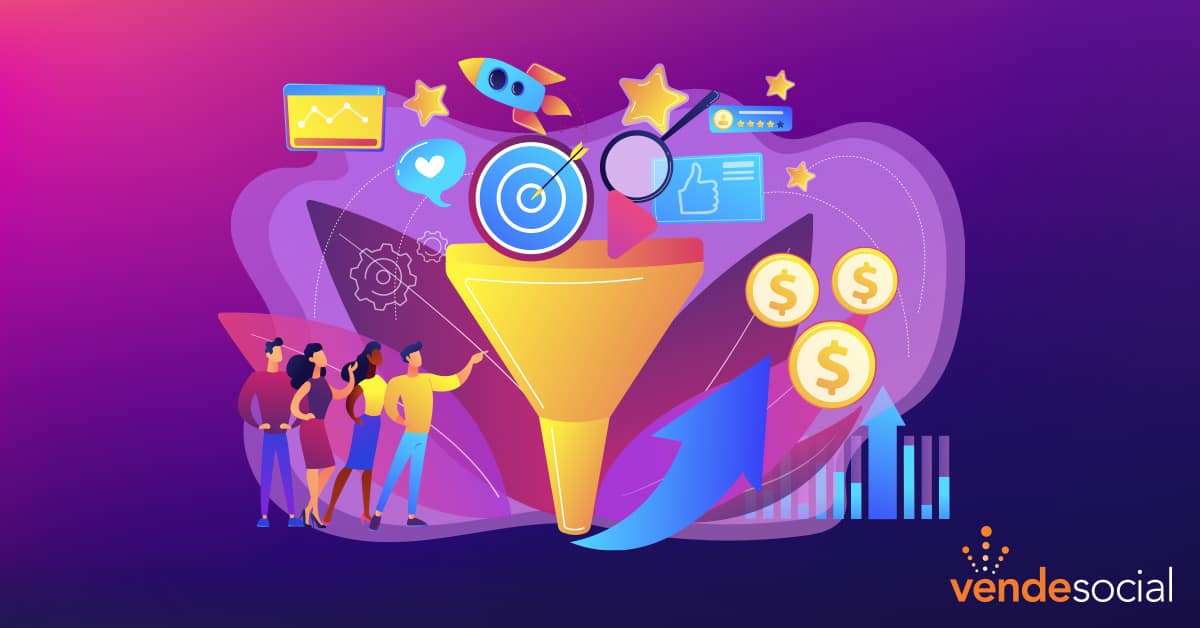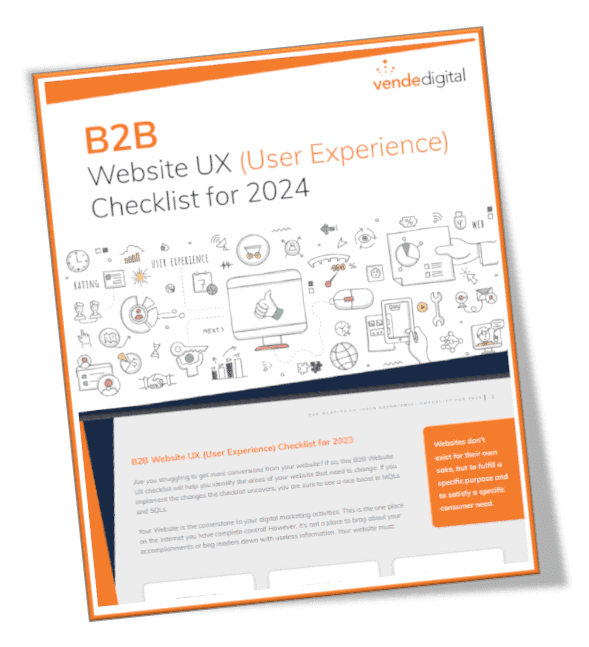
We’re probably all guilty of a little impulse buying. Maybe it was a new pair of shoes, a scarf, or something as simple as a candy bar in the checkout aisle. While it happens pretty frequently for B2C businesses, it’s certainly not as common in the B2B world. Here, purchase decisions are rarely made by just one individual, which makes having a game plan an essential part of your marketing strategy. We call that game plan a sales funnel.
Sales Funnel Simplified: How Do I Build a Sales Funnel?
The job of marketers is to move potential buyers through the sales funnel from the top, awareness, to the bottom, purchase. We’re simplifying the sales funnel and showing you how to build one for your business.
What is a sales funnel?
The sales funnel is a consumer-focused marketing model. Your sales funnel maps out the journey a customer goes through when purchasing a product or service.
Top of the Funnel
Every customer journey starts at the top of the funnel, often called the awareness stage. Your potential customer has a problem or a need, and they are looking for a way to solve it. They are searching for information. For marketers, this is where you want to direct them to an informational solution, things like blog posts, white papers, social content, and eBooks. Don’t worry or focus too much on what you’re actually selling. Remember, this is the awareness stage. While the information you provide should point back to a product you sell or a service you offer, the goal is to get a lot of visibility, so your target customers become aware of you. If these leads find your information useful, they should continue down the sales funnel to the evaluation stage.
Middle of the Funnel
Congratulations, you captured your prospective buyers’ attention. They have a problem that needs to be solved or a need that needs to be met, and they know that you have information that can help them. For B2B companies, this mid-funnel content is generally the most critical part of the sales funnel. Because B2B purchase decisions are more complex, the middle of the funnel is all about building and nurturing relationships with your prospects.
Buyers at this stage are evaluating their various purchase options and making decisions about what the best fit will be for them. Your job is to show them why your products and services are the best fit. Mid-funnel content should be persuasive, educational, and targeted as you work towards building trust between your audience and your brand. The most effective types of content are going to be webinars, case studies, fact sheets, and expert guides.
Another way to think about this is that you’re warming them up to what you are selling. Remind them of the problem that they are struggling with and how you can solve that need for them. The middle of the funnel content is more focused on specific problems and solutions.
Bottom of the Funnel
You made it. You nurtured your prospective B2B to the last stage of the customer journey, the bottom of the funnel, the purchase phase. The customer is ready to buy, they’ve done their research, compared your company with the competition, and just need to make that final decision. So what is holding them back, and what else could you offer?
Often, a buyer just needs a friendly nudge and a compelling call-to-action to get them to feel secure in their decision-making process. During this stage, your content should clearly show how your product or service stacks up against the competition. Let prospective buyers know the value they get by choosing your company. Make sure these prospects feel secure with your company. Now may be the time to offer personalized demos, trial offers, or testimonial videos.
While each sales funnel won’t look the same, they can all follow the same simplified approach. Start by understanding the needs of your audience and then build a sales funnel that provides awareness, educates, and finally persuades a customer to make a purchase.
At Vende Digital, we are focused on helping B2B companies grow their business. We have been helping B2Bs develop winning online solutions since 2000. See for yourself how growing your business is our business. Start by scheduling a complimentary digital marketing analysis where we’ll review your digital footprint and provide you with fresh ideas and actionable insights. Schedule a consultation today to get started.
Sales Funnel Simplified Key Takeaways
- The sales funnel is a consumer-focused marketing model.
- A sales funnel maps out the journey a customer goes through when purchasing a product or service.
- The job of marketers is to move potential buyers through the sales funnel.
- While each sales funnel won’t look the same, they can all follow the same simplified approach.
